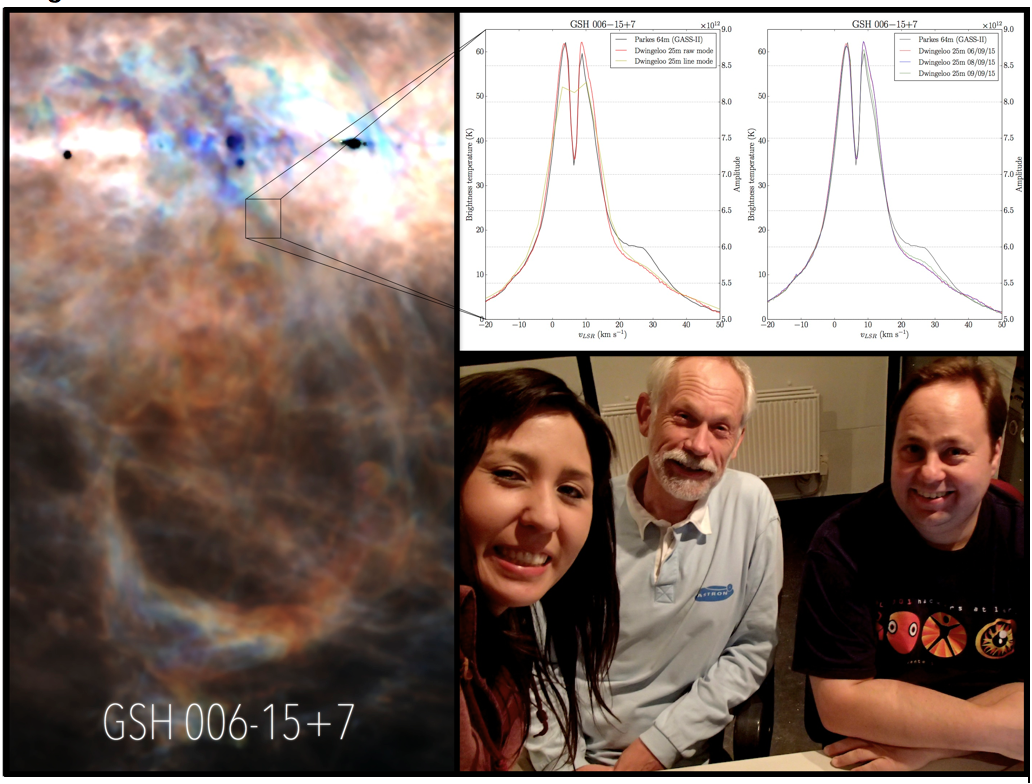| Description: | During my visit to ASTRON in September 2015, I met Harm Munk and Paul Boven who introduced me to the Dwingeloo telescope. We devised a plan to observe a supershell in neutral hydrogen that I'd studied with the Parkes 64m Radio Telescope (GSH 006-15+7, Moss et al. 2012), in order to see how the 25m observations compared and whether the structure of the shell had changed at all since it was observed several years ago (black line in left plot) as part of the Galactic All Sky Survey (McClure-Griffths et al. 2009). Our investigations with the Dwingeloo telescope took place over a few nights, during which we uncovered some interesting things!
Firstly, the default line mode of the spectrometer could not resolve the ~2 km/s HI absorption (yellow line in left plot), so we needed to switch to the 'raw mode' which is Fourier-transformed after the observations (red line in left plot). We were excited to see that we had resolved the line much better than in the original GASS data. The absorption at 7 km/s traces the wall of the supershell, and is produced by cold shell gas shadowing the bright Galactic background.
Curiously we found that to get the correct spectral alignment, we needed to shift the Dwingeloo spectrum by 1 km/s. Some digging revealed something that was pretty surprising to me: most radio observatories around the world seem to use an old definition of the speed of the Sun (20 km/s from Blaauw & Schmidt 1965) rather than the updated version (16.5 km/s from Mihalis and Binney 1981). The Dwingeloo telescope software is using 16.5 km/s, and once this is carried through the various conversions, it produces the observed offset of 1 km/s - meaning that Parkes must use the older 20 km/s definition.
The plot on the right shows the spectrum observed on different nights with slight adjustments to our observing method. The final spectrum (green line in right plot) represents our inclusion of a manual pointing correction to Dwingeloo (thus matching the Parkes spectrum most closely). The slightly raised plateau in the Parkes spectrum near 30 km/s is not clearly seen in our Dwingeloo data, most likely due to the difference in angular resolution between the two telescopes.
|

